
| What is Flavor and Fortune? |
| How do I subscribe? |
| How do I get past issues? |
| How do I advertise? |
| How do I contact the editor? |
Read 13116860 times
Connect me to:
| Home |
| Articles |
| Book reviews |
| Letters to the Editor |
| Newmans News and Notes |
| Recipes |
| Restaurant reviews |
| Article Index (all years, slow) |
| List of Article Years |
| Article Index (2026) |
| Article Index (last 2 years) |
| Things others say |
| Related Links |
| Log In... |
| Authors |
| Categories & Topics |
Guizhou: Province, People, and Potency
| by Jacqueline M. Newman |
Chinese Food in China, Hong Kong, and/or Taiwan
Spring Volume: 2013 Issue: 20(1) page(s): 25 - 27, and 30
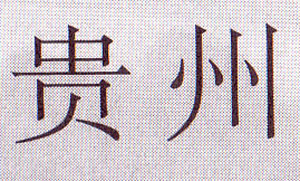 Under Chinese control during the Han Dynasty (202 BCE - 220 CE), perhaps even before that, the region around Guizhou has been well known for thousands of years. During Ming Dynasty times (1368 - 1644 CE), with heavy Chinese settlements adding many folk from Sichuan, Hunan, and other surrounding areas, China's rulers made this mountainous area with lots of flatland, a province.
Under Chinese control during the Han Dynasty (202 BCE - 220 CE), perhaps even before that, the region around Guizhou has been well known for thousands of years. During Ming Dynasty times (1368 - 1644 CE), with heavy Chinese settlements adding many folk from Sichuan, Hunan, and other surrounding areas, China's rulers made this mountainous area with lots of flatland, a province.
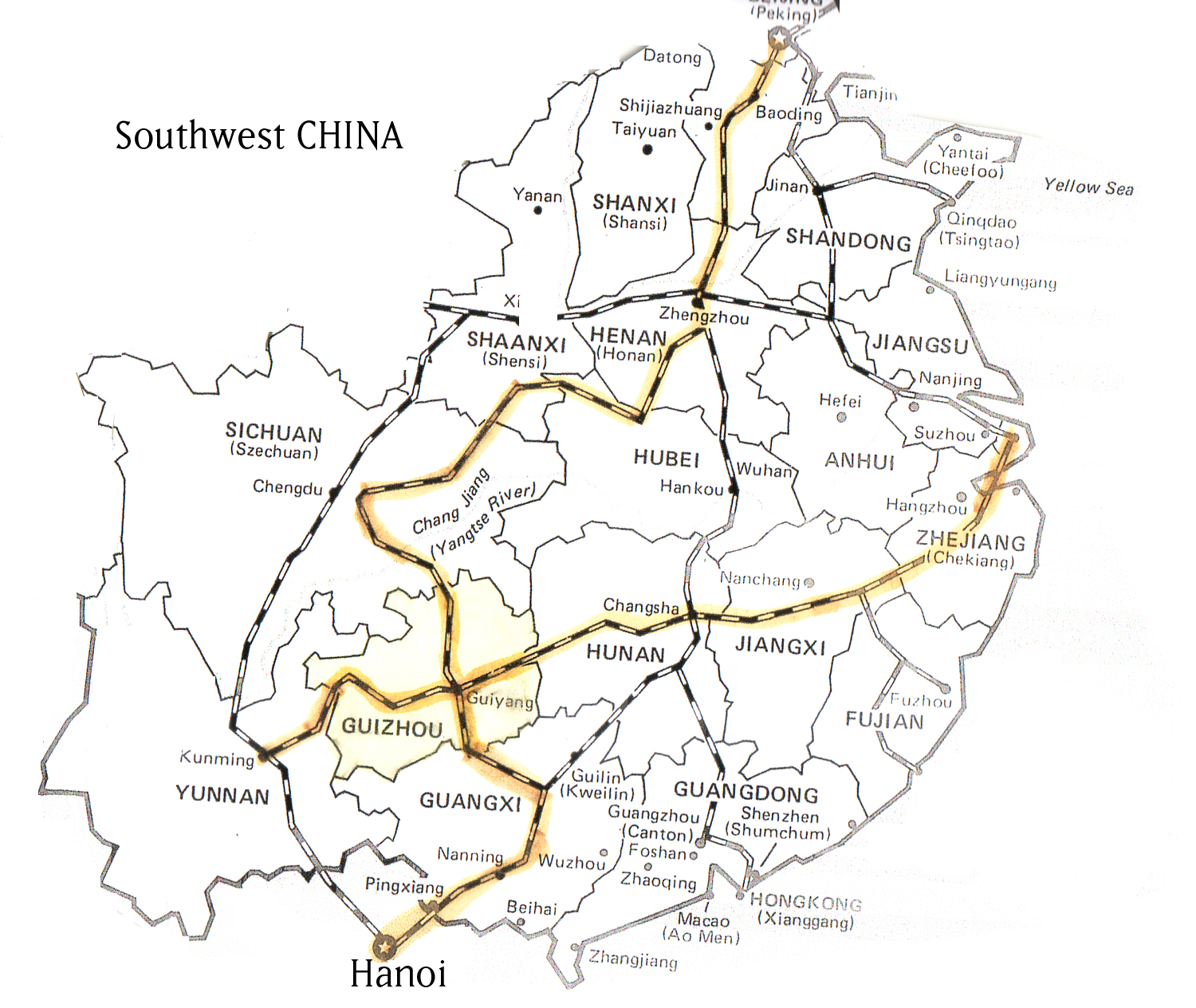 Guizhou, previously spelled Kweichow, is to the southeast of the Sichuan Province, to the southwest but not touching the Hubei Province, to the Northeast of the Yunnan Province, the north of the Guangxi Province, and to the west of the Hunan Province. A map is provided to clear the visualization.
Guizhou, previously spelled Kweichow, is to the southeast of the Sichuan Province, to the southwest but not touching the Hubei Province, to the Northeast of the Yunnan Province, the north of the Guangxi Province, and to the west of the Hunan Province. A map is provided to clear the visualization.
While this province does have fewer ethnic minorities than the Yunnan Province, it still is a large melting pot of ethnic diversity among the more than forty million people living here. There are nine large minority populations in this province that make up about one-quarter of the total populations, and they include many Miao and Gejia peoples who are often grouped together. We know not why they are so grouped as they do not see themselves as one minority. They are more than half of all of the ethnic peoples here and together they are some five million folk.
Other minorities in decreasing population order are the Bouyei, Dong, Tujai, Yi, Gelao, Shui, Hui, and the Bai. This last group are more than a quarter of a million people. Though many minorities are well-assimilated, most do keep their traditional clothing and culinary customs, particularly at festivals and at life-cycle event occasions, and they and the Han are not too affluent.
Guizhou has little arable land and lots of coal mining and forestry. Foods here mean eating spicy and sour flavored dishes with onions in many of them. Non-Chinese people in and outside of China do not know much about Han or the minority groups here, many do not even know exactly where Guizhou is. One thing they probably do know is the home-town beverage, that is Maotai. The best, considered the most well-known, is made at the Moutai Distillery. They are the makers of the Maotai liquor shown on this page. The distillery's correct and complete name is Zhingguo Guizhou Maotai Jiuchang. Many other companies do make Maotai, they all taste somewhat similar, but those who love this potent alcoholic drink will assure any listener, they are not the same.
 For those who go to Guizhou, two major railroads cross the province at Guiyang, the provincial capital. Check out that map and see one runs west to northeast between Kunming and Shanghai, the other almost directly north-south between Beijing and Hanoi.
For those who go to Guizhou, two major railroads cross the province at Guiyang, the provincial capital. Check out that map and see one runs west to northeast between Kunming and Shanghai, the other almost directly north-south between Beijing and Hanoi.
This province is underdeveloped, as is the Guangxi Province to its southeast. Can that be why many think of Guizhou dishes as 'famine' cookery with local tastes? Many dishes here are considered 'borrowed' because of their partial similarity with their neighbors. There is zong zi from the Guangdong Province, sweet, sour, and piquant dishes from Sichuan and elsewhere, local hotpots with origins in Beijing, and local dishes made with dog that show their Vietnamese relationships.
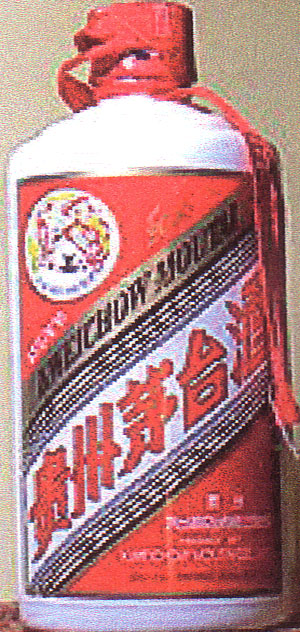 Popular, as expected, are items cooked with the famous Maotai. It is distilled from sorghum and other grains, and is potent and popular. Though some Zhuang people live here, most reside in the Guangxi Zhuang Autonomous Region in the south; and though their numbers are not large, their foods are well known, well-liked, and consumed often.
Popular, as expected, are items cooked with the famous Maotai. It is distilled from sorghum and other grains, and is potent and popular. Though some Zhuang people live here, most reside in the Guangxi Zhuang Autonomous Region in the south; and though their numbers are not large, their foods are well known, well-liked, and consumed often.
The Buyi people are close to three million in this province, they are the eleventh largest non-Han minority in China, and you may have seen their name written as Bouyei, Buyei, and Puyi. They use none of these nomenclatures; they call themselves, Puzhong, Burau, Puman, or Buyizu. They speak a Thai-related language that is close to that of the Zhuang and are part of the Zhuang-Dai branch of the Zhuang-Dong language family in the Chinese-Tibetan language group. Little is known about this population because they never had a written language until the end of the 1940's when, with government help, they learned to write using the alphabet the western world uses.
In Guizhou, the Buyi and others are predominantly farmers who raise paddy and dry-land rice, also wheat, maize, millet, sorghum, buckwheat, rape seed, potatoes, beans, sugar cane, tea, tea-oil, bamboo shoots, bananas, coffee, and cocoa. They collect many herbs founds in the mountainous areas of the province, and their culinary reflects this.
They and others in this province are known for their double-cooked dishes such as Guizhou Aromatic Crispy Duck. It is steamed first then deep-fried. Tea-smoked Pork in this province is also made using two different cooking techniques, different from ones made in the Sichuan Province. Here they twice-cook the pork, first boiling it then stir-frying it with sour additions. They twice-cook their beef, too, marinating it and making it spicy, then steaming it in a basket. The Buyi prepare Deep-fried Whole Spicy Fish first marinating that, too, then they load it with chopped pickled peppers and braise it. Ants Climbing Trees, a Sichuan import that looks like there are ants within but has no insects, is also double-cooked. Interestingly, it is prepared in different ways in different parts of the province.
Local rice tofu is used in many dishes including Tofu Rice Balls. This popular snack has no tofu in it. It is simply boiled rice flour cooked until thickened, cooled somewhat, cut into small pieces, then stir-fried with Chinese broccoli, fried peanuts and minced onions, and seasoned with soy sauce, hot oil, ginger juice, salt, and more. It does look like tofu, hence its name, and it is consumed when golden. People here eat it in large quantities, particularly in warm weather.
Another famous provincial dish are noodles made in sheets with lots of eggs. Originally cut with a flexible stick, nowadays rarely made by hand, they are easy to get, inexpensive when made by machine, and loved here. Fish in Sour Soup, and Vegetarian Spring Rolls are popular, too. The soup can be made with hand-pulled noodles. This soup is loved with lots of hot oil and spices; note how much in that accompaniment by the cupful shown on this page, as are the noodles one chap is pulling to make mine in a mall in Flushing.
Spring rolls in this province are called Baby Strips. For those who wonder why, each one looks look like a tiny baby whose hands and feet are sticking out of the blanket. The baby's appendages are strips of kelp, cucumber, radish, pickled peppers, scallions, and other vegetables, and the blanket is a rice flour pancake rolled around them.
Chicken feet are adored more in Guizhou than anywhere else in China. Locals tell us that they are said to bring money and good fortune to those who eat lots of them, so many here do just that. They also consume lots of sweet soups thickened with water chestnut flour and flavored with sesame and lotus seeds, and dry fruits including dates, raisons, and mei plums, also quail eggs and red glutinous rice.
In Guizhou, they like snacks deep-fried and rolled in large breadcrumbs. We had some and when brought to our table along with a popular sweet dish of steamed glutinous rice pounded until sticky, they came rolled in sugar and fried.
Many minorities, including Miao, Buyi, and Shui, live in Pingtang County southeast of the capital city. Folks in and outside China make special trips here to see them because their costumes are gorgeous and show off lots of silver ornamentation that adorns them. The Maonan people, one of China's smallest ethnic groups, also live in Guizhou. Those coming to see them are often disappointed as they do not find any in the cities of Kapu or Jiacha. A popular Maoan dish is Blood Stuffed Pig. Those invited to see and eat with these hospitable people find it difficult to swallow. Others who do go to see and meet Jinuo people love their Cold Dish in Sauce until they learn its contents are crumpled tea leaves kneaded with sour bamboo shoots, sour ants, garlic, chili, and lots of salt. Then lose interest in it. Anshan is Guizhou's second largest city and home to three-quarters of a million people, Kaili, the third largest. Half million people live here, most Miao and Dong minorities, while other populous places they live are the cities of Duyen, Lipanshi, and Qingzhen. Minorities are less visible in these cities though they do make up more than thirty-five percent in all of them.
Before visiting, do learn when the popular festivals are held. Ask about the Anshun Oil Cauliflower Festival, also known as Tiaohuachang. It is in mid-April, and during it, locals celebrate their belief that cereal crops will not bloom if they do not celebrate this harvest day. A Sisters Festival has an Eating Sisters Meal in late April or early May. Their Valentine-like holiday is for lovers, but we are unsure when it is held as it is at different times in different places. The Guizhou Azalea Festival and others are also at various times in various places as are the Guizhou Fertility Festival, Dancing on the Sloope Festival, the Nankai Lusheng Festival, the Tiajiang Dragon Lantern Festival, and still others.
Guizhou is home to one of China's eight famous cuisines known as Qian or the Gui cuisine. It is best known for spicy and sour tastes in the same dish. This is a unique combination in China, and local folk told us if they do not eat sour foods for three days they will have weak legs and stagger when walking. That said, they eat these flavors together often.
The main crops in Guizhou include rice, corn, rapeseed, tea, and hemp, the most popular dish, their Fish in Sour Soup. It originated in the southeastern part of the province in Kaili and is made with fish, sticky rice, wild tomatoes, peppers, shallots, ginger, and vegetables. Everyone we spoke to said they love it and the Bijie Dumplings made with rice flour and rock sugar filled with ham, sesame seeds, peanuts, and often some dried vegetables that many put into this soup.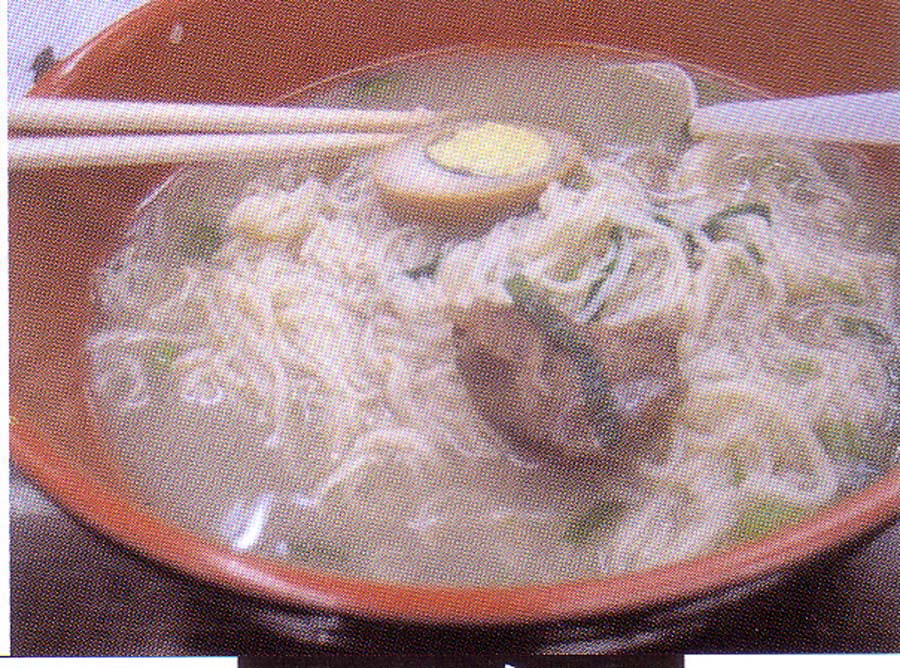
In Guizhou, families air-dry their vegetables, then they seal them in crocks for at least a week starting a fermentation process. They add more vegetables after using some of them in their main dishes. One other popular dish in this province is Crackling Fish with Zao Pepper, and this pepper is only found in this province. The people here also make lots of Huaxi Rice Noodles in a broth made with beef, Sichuan peppercorns, ginger, pickled cabbage, sesame oil, and hot oil. People here also adore Siwawawhich are shredded rice-flour pancakes with shredded vegetables, fried soy beans, kelp, radishes, bean sprouts, and cucumbers. They like this dish and many others with a hot and sour sauce. Look for it at Flavor and Fortune's website listed in the Article Index there.
Another beloved dish is Love Bean Curd, a Miao snack made with oil-roasted tofu rolled around scallions and spread with hot sauce, garlic, and ginger. Other Miao dishes are Rice Doufu, known as Mi Doufu, made with coagulated rice and not bean curd, and served with garlic sauce, vinegar, ginger, pickles, and peanuts. Also Miaojia Ganguoji with small pieces of chicken, pickled cabbage, mushrooms, garlic, black pepper, and other spices. These are in many other dishes in this province, and this dish is fried. With many people living in Guizhou who came from many other provinces, diced chicken with chilli peppers and peanuts is a favorite. It is made with fermented glutinous rice, onions, ginger, garlic, and soy sauce. Locals here eat it often.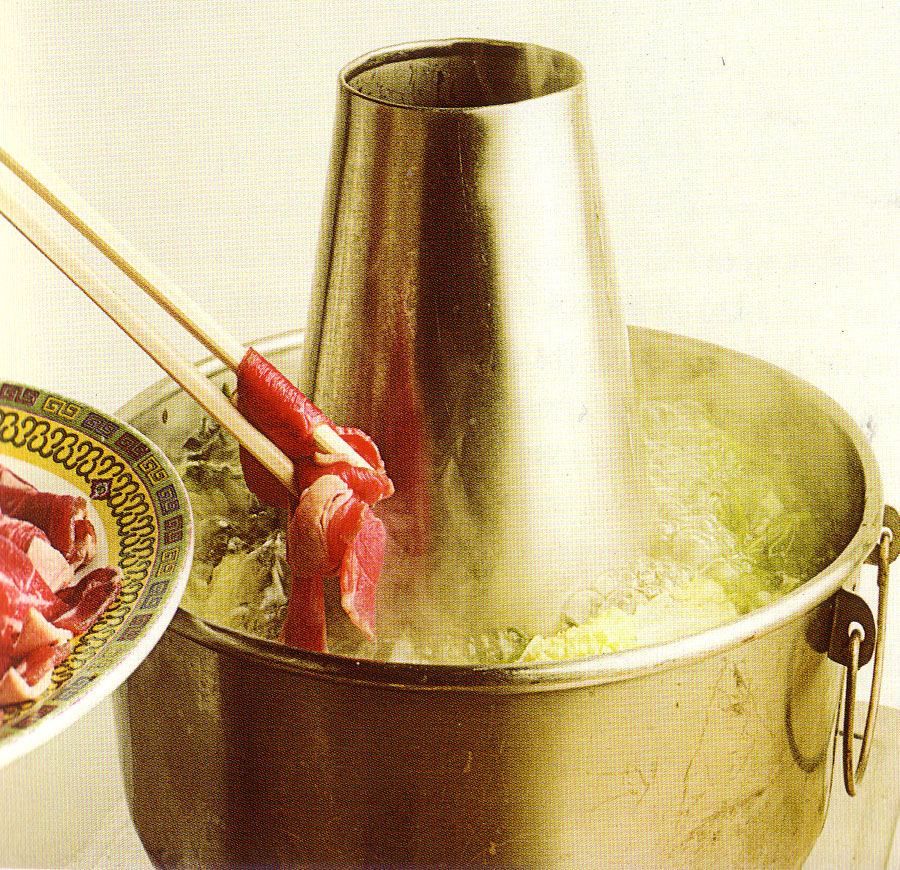
Nearby, in the Guizhou mountains, are bamboo groves where zhusun, a special mushroom is found. Said to refresh the brain, clear the eyes, nourish the kidneys, moisten the lungs, and strengthen overall health, they are used in Basket Dove Eggs, a dish that looks like a dove's nest. When looking for these mushrooms, they look for a fern called Dragon Talons. They cook this with meat and serve it crisp or use it their hotpots.
Beverage consumption in this province means alcohol, one already indicated. Men, in winter, drink theirs eating dishes made with specially bred dog that they like steamed in clay pots. Said to increase sexual potency, this very expensive item is often a New Year's treat. It is popular near Kaili where dog hind quarters can be seen hanging in local butcher shops. This most expensive part of the animal is cooked with chilies. Dog or salted duck are served with salad, peas, potatoes, and lots of oil, also the canine's spicy stomach, split tongues, and fatty sausages. In Guizhou, one does see these and many other meats drying in the sun getting them ready to cook.
Should you want to try dog and are female; I hope you have better luck than I did, but elsewhere. In Hong Kong once, they would not serve it to me. Even when my husband ordered some and passed it over to me, a waiter came and whisked it away. Some gals told me I should try to get some at a food market in the evening, but alas, that did not work either. Late-night vendors do tantalize tourists and locals with their fiery foods, super sour soups, and their mushroom and dog dishes. My best chance one evening was that 'not selling dog to women' might be ignored, and once it was, but that dog dish was not Guizhou-style.
More about this, other provinces, their minorities, and their recipes will appear in future issues.
| Imperial Guard Chicken |
|---|
1 whole boneless chicken breast, cut in one-inch squares 1 egg 2 Tablespoons soy sauce, divided 2 Tablespoons Shaoxing wine, divided 2 Tablespoons fermented glutinous rice 1/4 cup cornstarch mixed with same amount of cold water, divided 2 teaspoons Chinese black vinegar 1 teaspoon sugar 1 Tablespoons vegetable oil 3 Tablespoons sliced onions 1 teaspoon half-inch dried chili peppers 1 teaspoon Zhusun mushrooms (optional) 1 teaspoon Sichuan peppercorns 1 scallion, thinly sliced on an angle 5 slices fresh ginger 1/4 cup peanuts, deep fried Preparation: 1. Mix chicken, egg, and half each of the soy sauce, wine, fermented glutinous rice, and cornstarch mixture. 2. Mix remaining soy sauce, wine, fermented rice, and the cornstarch mixture, and set this aside. 3. Heat wok, add oil, and deep-fry the peppercorns for half minute, remove them and drain on paper towel. Do likewise with the chili peppers and the mushrooms, if using them. Then fry the onions until soft, and remove them, too. 4. Remove any remaining oil, return the peppercorns and chili peppers to the wok, add scallion pieces, ginger, garlic, and the chicken, and stir-fry for one minute, then add peanuts, stir-fry another minute, then serve. |
| Guizhou Spicy Doufu |
|---|
3 Tablespoons vegetable oil 1/2 pound firm doufu, pressed for half an hour, then cut into one-inch cubes 1/4 pound hand-minced beef 2 cloves peeled garlic, coarsely chopped 2 Tablespoons fermented bean paste 2 teaspoons chili paste 3 Tablespoons beef stock 2 Tablespoons black vinegar 2 Tablespoons minced fermented Sichuan cabbage 2 Tablespoons cornstarch mixed with two tablespoons cornstarch Preparation: 1. Heat wok or heavy fry-pan, then add oil, and when hot, add the doufu and stir-fry for three minutes or until golden. Then remove and drain on paper towels. 2. Add minced beef and the garlic, and stir-fry for one minute until the meat is no longer pink before adding the bean paste and the chili paste. Stir well, then add the stock and the vinegar, and bring to the boil. 3. Next add the minced fermented cabbage and the cornstarch paste. Stir until the sauce thickens, then serve. |
| Sour Guizhou Vegetables |
|---|
1 small red pepper, seeded and cut in thin strips 1 medium green pepper, seeded and cut in thin strips 1 large onion, cut in wedges, top to bottom 1 cup mustard strips green, blanched for one minute, then cut in half-inch by two-inch strips 2 Tablespoons vegetable oil 1/3 cup Chinese brown slab sugar 1/3 cup Chinese black vinegar 2 Tablespoons cornstarch mixed with the same amount of cold water Preparation: 1. Bring two quarts water to the boil, and add the peppers, onion, and mustard green pieces, and boil them for four minutes, drain and set them aside. 2. Heat wok or heavy fry pan, add the oil and the drained vegetables. Stir-fry for one to two minutes until they are heated through. 3. Add the brown sugar and the vinegar, stir for half minute, then add the cornstarch mixture, and stir until vegetables are coated, then serve. |
| Fish with Sour Vegetables |
|---|
2 Tablespoons vegetable oil 1 pound boneless fish filets, cut into four-inch pieces 1 recipe cooked Sour Guizhou Vegetables Preparation: 1. Heat wok or heavy fry-pan, then add the oil and when it is hot, add the pieces of fish, and fry for one minute. 2. Turn them over and fry for another minute, then remove to a pre-heated serving plate. 3. Top with the hot vegetables, and serve. |
| Steamed Stuffed Rose Cakes |
|---|
1 Tablespoon vegetable oil 5 eggs, beaten until light in color 1 egg yolk, beaten 3 Tablespoons Chinese rose wine 1 cup flour 1/2 pound slab of Chinese brown sugar, crushed 1/4 pound minced or ground pork 2 Tablespoons minced water chestnuts 2 Tablespoons soy sauce 2 Tablespoons Chinese black vinegar 2 Tablespoons water chestnut flour 2 Tablespoons cornstarch Preparation: 1. Oil an eight-inch square baking pan. 2. Mix eggs, egg yolk, and the rose wine. Then beat in the flour a tablespoon at a time, and finally the brown sugar. 3. Pour into the oiled pan, and steam over boiling water for twenty-five minutes. Check with an inserted toothpick, and if it comes out clean, remove from the steamer if not, allow it to steam another five minutes and check it again. Then cool. 4. Fry the pork and water chestnuts for two minutes, then add the soy sauce and the vinegar, and fry another two minutes. 5. Mix the water chestnut flour and the cornstarch with one tablespoon cold water, and stir into the meat mixture. Cool this for half an hour. 6. Cut the steamed cake in two-inch squares, and cut each of them in half through parallel to the table surface. 7. Fill with the bottom halves with some meat mixture, cover, and serve warm or at room temperature. |
| Sour Soup |
|---|
1 recipe Guizhou Sour Vegetables 2 quarts chicken stock, half cup set aside 4 hard-cooked eggs, peeled and cut in half 1 cup boiled hand-pulled la mian noodles 1 Tablespoon hot sauce 2 Tablespoons Chinese black vinegar Preparation: 1. Heat the sour vegetables and the large amount of chicken stock until just below the boiling point. 2. Add the eggs and the noodles. 3, Mix reserved half cup of stock, the hot sauce, and the vinegar. 4. Serve the soup mixture in a bowl or plate it out into individual soup bowls, putting half an egg and some noodles into each bowl. 5. Set the hot sauce on the table with a serving spoon, and let everyone put some into their own soup, as desired. |

Copyright © 1994-2026 by ISACC, all rights reserved
Address
3 Jefferson Ferry Drive
S. Setauket NY 11720